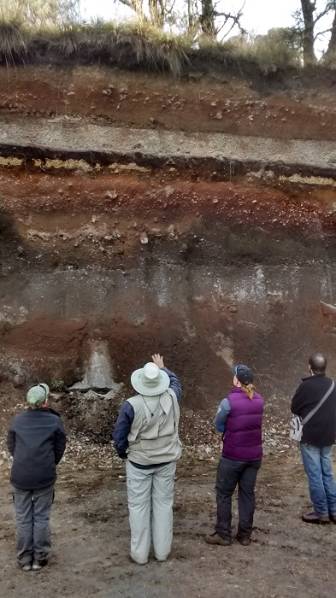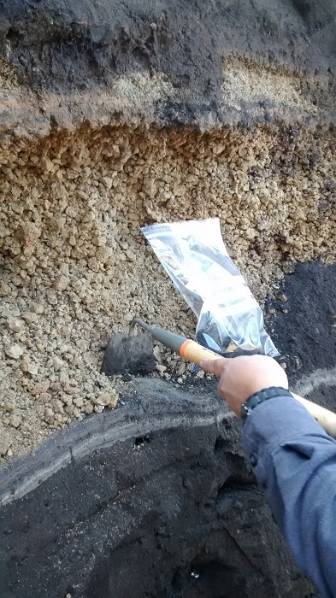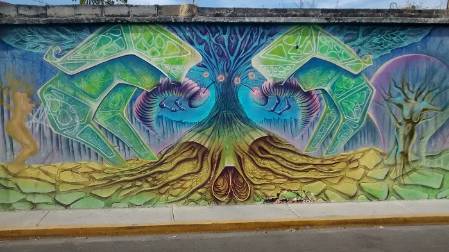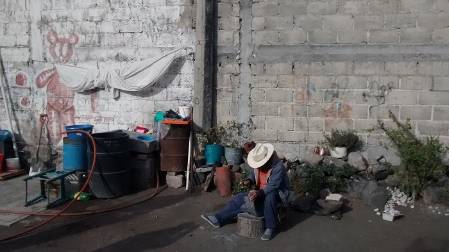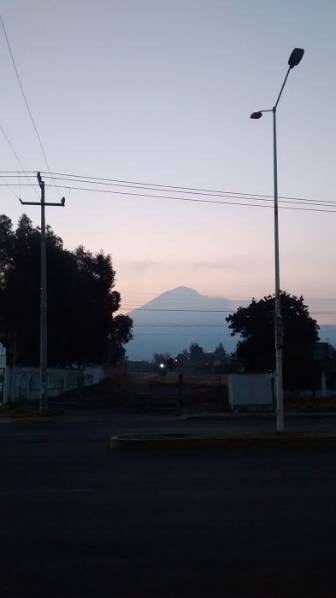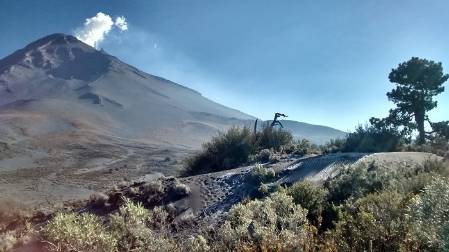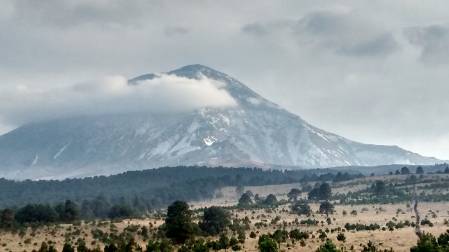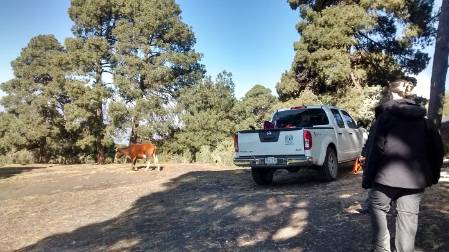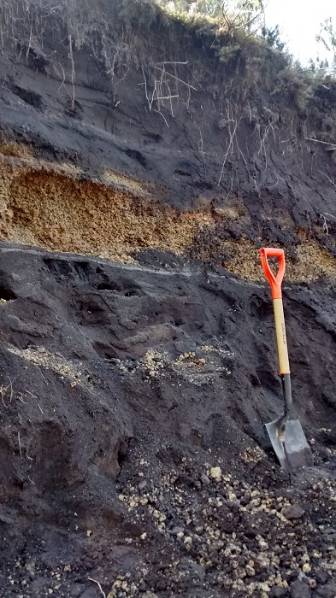A team of geologists from the Museum and Imperial College are in Mexico carrying out fieldwork at two of the most active volcanoes in the world: Popocatépetl (Popo) and Colima. Catch up with their adventures in this series of blogposts.
Time flies – we've already been here for a whole week! While Popo was smoking and steaming like a champion, we dived deeply into the dirty, dark side of geology during this week: We sampled ash and pumice from the four large eruptions of the last 15,000 years. For hard-rock geologists like Chiara, Julie and me, this was a challenging task. So much dust, so few proper minerals! But if you want to understand how Popo works, this is simply what you need to go through.
Armed with shovels of various sizes, a tape measure, our geological hammers (you never know!), and, last but not least, a hoe (romantically referred to as the ‘mano de gato’ - ‘the hand of the cat’), we went out onto Popo’s flanks to search and exploit its volcanic deposits. Hugo, the Popo expert, unerringly navigated us to the top spots, where we then got to work. The following series of pictures reveals what this actually involved:
First of all, we need to get an overview about what we see. In this case, we are looking at the deposits of at least three large eruptions of the last 5,000 years. If you want to know more about such eruptions, just ask us!
Next, we describe the different layers we see. This includes the size and properties of the clasts, the structures, and the thicknesses of the units.
After that, we can start sampling. Sometimes it can be straightforward, sometimes you may need a helping mano de gato (‘the hand of the cat’) to clear the sampling site and guarantee a neat sample.
Some or all parts of the layers might be covered with soil or debris. In this case, the shovels of various sizes come into play. This picture demonstrates that in doing so you may excavate more than rocks, such as the rubbish of what apparently was a big Mexican Fiesta (including diapers and mayonnaise).
On other occasions, it might not be garbage, but a proper treasure that you dig out: A volcanic bomb! Hard-rock geologists, get your hammers and cameras ready!
And this is what you get if you repeat the above steps for a whole week.
Now, this might have all been a bit nerdy, so I’ll finish this blog entry with an almost completely unrelated note. Of course we are not only interested in rocks, but also in Mexican culture. Naturally, when a worker in a quarry (we were there by chance, obviously) told us that there was a man in the nearby town San Nicolás de los Ranchos who would craft wonderful molcajetes (pestle and mortars), we went there immediately.
On the way there, Hugo explained to us that molcajetes are mortars especially designed for making salsa. Did I mention that they are made of rock? This is also why the salsa made using molcajetes tastes different than if you just use a simple blender – the sauce takes up the taste of the rock.
With this salsa-lesson learned, we were all quite keen to see these wonderful items. But how would we find the Molcajete Man in the village? It’s easier than you’d think: you just ask anyone on the street for molcajetes. He/she won’t be able to give you a helpful answer, but 3 minutes later the whole village will know about the lost tourists looking for molcajetes. Out of nowhere, a random girl will appear next to your car, offering to bring you to Molcajete Man. Being a lost tourist, you accept the offer and follow the girl for about 30 minutes through the village, which gives you the opportunity to take some tourist pictures:
San Nicolás de los Ranchos is built on laharic deposits from Popocatépetl.
Evacuation routes are signposted all around Popo.
The presence of the volcano inspires local artists to draw their own conclusions on what happens in nature.
Finally, we reached the mansion of Molcajete Man. He looked different than I expected, but obviously he is a master of molcajeting.
Molcajete Man crafting a molcajete.
We would have really loved to get our own molcajete by that time, but these mortars are just way too big to transport to the UK. At least they are if you are already sending a garage full of pumice there.
Thus our pumice week has ended, and we enter phase two: rocks! I can already promise you it will be an exciting ride, so visit us again!



